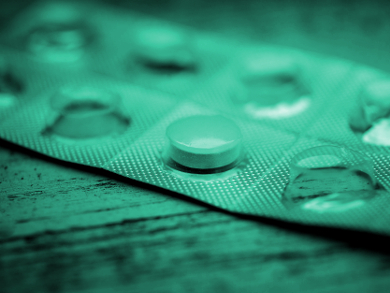In the future, diabetics may be able to avoid daily insulin injections. Samir Mitragotri, Harvard University, Cambridge, MA, USA, and colleagues have developed a method that allows the blood sugar-regulating drug to be administered orally. Thanks to a special formula, insulin efficiently circumvents the gastrointestinal barriers and moves from the mouth through the stomach and intestine without problems and from there into the bloodstream. In initial tests with rats, the insulin pill has proven to be effective.
In the insulin tablet, the hormone is transported in an ionic liquid composed of choline and geranic acid (CAGE). This is then packed in a capsule with an acid-resistant coating to protect the insulin from stomach acid. The protective coating dissolves only in the more alkaline environment of the small intestine. There, insulin would normally be attacked by enzymes that break down the protein into amino acids. However, the insulin carried by the ionic liquid remains stable. The choline-geranic acid formulation also helps in overcoming the mucous membrane and the so-called tight junctions of the intestinal wall, which are difficult or impossible for many substances to pass.
The formulation has a high biocompatibility and was stable for two months at room temperature and for at least four months under refrigeration. According to the team, CAGE is a promising oral delivery vehicle.
- Ionic liquids for oral insulin delivery,
Amrita Banerjee, Kelly Ibsen, Tyler Brown, Renwei Chen, Christian Agatemor, and Samir Mitragotri,
Proc. Natl. Acad. Sci. USA 2018.
https://doi.org/10.1073/pnas.1722338115




